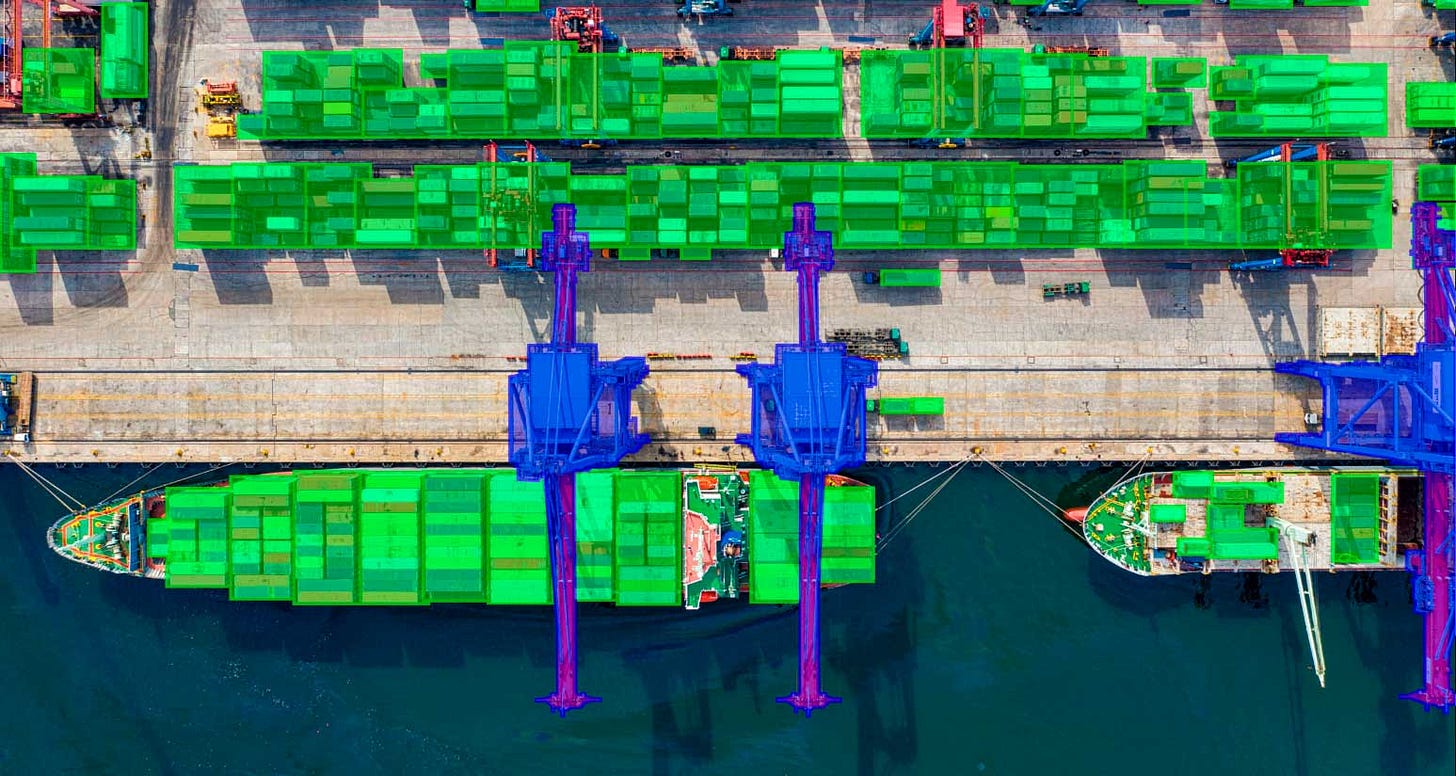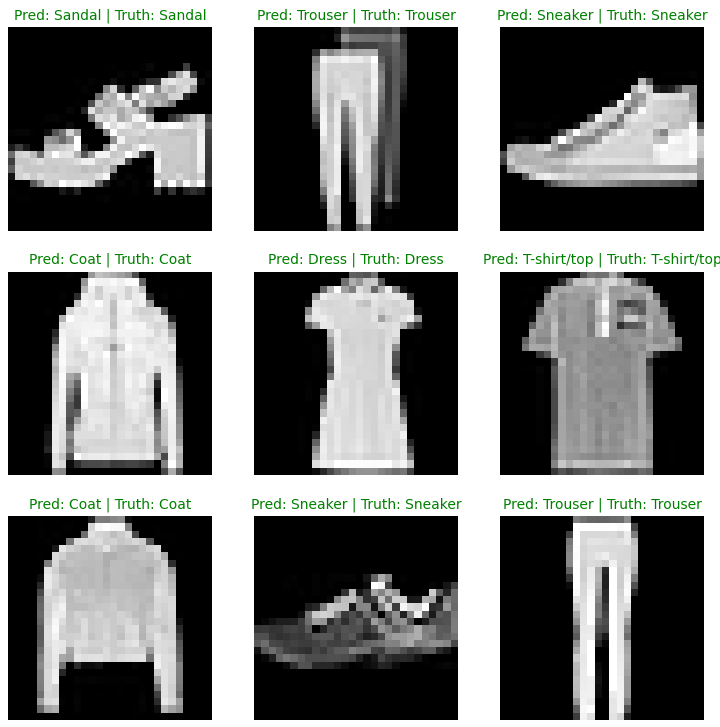Is Computer Vision the Highest ROI Opportunity within AI?
Top applications of Computer Vision and typical implementation steps
Executive Summary
Computer Vision projects have a track record of delivering ROI for businesses
Key applications include object detection, position tracking, and counting
High-quality images and video are an essential starting point for Computer Vision projects
Computer Vision projects offer some of the highest ROI opportunities within AI.
If there is one recommendation I’d give clients, it would be to explore Computer Vision (CV) applications in their business, as the technology has a track record of delivering returns.
For example, a company called CargoMetrics uses CV to track cargo ships via satellite imagery.
This data helped them predict a slowdown in supply chains during the pandemic and automatically short West Texas Intermediate (WTI) oil futures.
Two days later, the U.S. Department of Energy’s report confirmed their prediction, resulting in their biggest return of the year.

Similarly, Lowe’s has partnered with Nvidia to help with self-checkout, as items are often forgotten on carts.
Using Computer Vision, they can give customers a nudge in case they forget to check something out, thus reducing shrinkage and improving their bottom line.
In this article, we will discuss top Computer Vision applications, typical implementation steps, and guidelines for ensuring success.
Enterprise Applications of Computer Vision
There are numerous applications of CV within enterprises, but the most prevalent are:
Object detection
Counting
Position Tracking
Object Detection
Object detection in CV involves identifying and locating specific objects within an image or video.
This technology enables use-cases like autonomous driving, surveillance, and inventory management by detecting objects in real-time.
For example, object detection can be used to determine whether shelves are empty and needs restocking:
It can also be used to detect defects in objects. For example, in this video it’s able to identify two bottles that are missing caps:
In another example, it can be used to monitor for damage. Below is an example of Computer Vision used to detect rust in facilities:
Counting
Along with detecting objects, Computer Vision can be used to count the number of objects as well. This has numerous applications including yard management to get real-time data on capacity:
It can be used for crowd control and facilities management by counting people and alerting when thresholds are crossed:
Below is an example of how Computer Vision counts products exiting an assembly line.
Position Tracking
Lastly, CV can be used to track the position of objects over time. This is useful for surveillance use-cases or monitoring traffic through an intersection:
It can be used to track movement of equipment within a facility as well:
So now let’s discuss what implementing this technology looks like.
Typical Computer Vision Implementation Steps
The CV projects above typically follow these steps:
Data Preparation
Training
Evaluation
Iteration
Deployment
Data Preparation
First, we have to collect images of the objects we want to detect. You will likely have to collect hundreds, if not thousands, of images from different angles, environments, orientations, and scales, all properly labeled.
There are a number of different annotation tools and services around to help with this step.
Training
Now that we have the data prepared, we need to select the right model.
Different models are suited to different tasks, so we typically choose a pre-trained model that can already recognize similar objects and fine-tune it for your specific dataset.
Some common baseline models include:
YOLO for real-time object detection
OpenPose for pose estimations
FaceNet for facial recognition
Pre-trained models are especially useful when you don’t have a large enough dataset or when training from scratch would be too computationally expensive.
Once the model is selected and configured, the training process begins. This involves:
providing the model with sample images
allowing it to make predictions
comparing those predictions with the labeled data
and updating the model to improve its accuracy over time.
We continuously repeat this process until the model performs up to expectations.
Evaluation and Deployment
Once the model is trained, we have it analyze a completely separate set of test images and score its accuracy to determine whether it needs more fine-tuning.
If it doesn’t meet expectations, we continue to tune parameters, collect more data, and train for several more iterations.
If it meets expectations, we can integrate the trained model into web apps, mobile apps, or embedded systems based on the project’s requirements.
Final Guidelines For Ensuring Success
We conclude with 3 key recommendations to ensure your CV project runs smoothly and delivers results:
Prioritize Data Collection and Labeling
Proper data collection and labeling are critical for the success of your CV project. If your business has a large catalog of items, each one will need to go through this process to ensure the model is properly fine-tuned. The more accurate and diverse the data, the better your model will perform.CV is Best for Physical, Object-Based Businesses
CV projects tend to yield the best results for businesses dealing with real-world objects—such as those with extensive facilities, equipment, or physical assets. If your business revolves around software or services without physical components, CV may not be as beneficial compared to industries managing physical assets or infrastructure, like in retail, manufacturing, logistics, and construction.Understand Trade-offs to Speed Up ROI
In an ideal world, everything is instantaneous, but in practice, compromises can often speed up deployment and reduce complexity. For example, if you’re using CV to detect speeding cars, real-time citation issuance may not be necessary. By recording videos and analyzing them later, you can still achieve your goal with less time pressure and lower costs, without sacrificing effectiveness. Be honest about requirements for speed, accuracy, and real-time processing to make your engineering team’s life easier.
💡 Need Help with AI Implementations?
Feel free to contact us at our website here for a free 30-minute consultation.
If you know someone who needs help with AI, refer them to us and receive a $1,000 award.
And if you liked this article, follow us on LinkedIn or Twitter for daily, revenue impacting AI content.
Connect with our company LinkedIn page here.








